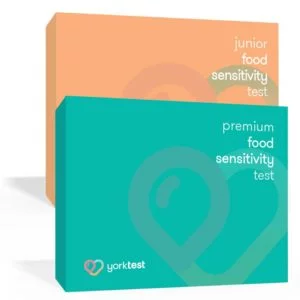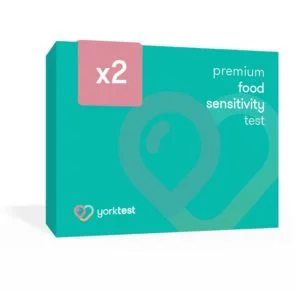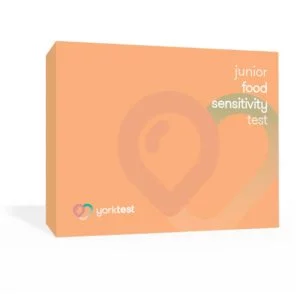- Understanding Histamine and Its Many Different Roles
- What is Histamine Intolerance?
- What Causes Histamine Intolerance?
- Genetic Factors
- Enzyme Deficiencies
- Gastrointestinal Disorders
- Symptoms of Histamine Intolerance
- Digestive Issues
- Skin Reactions
- Nasal Congestion and Headaches
- Other Histamine Intolerance Symptoms
- Foods High in Histamine Levels
- Natural Antihistamines to Help With Allergic Reactions
- Testing for Histamine Intolerance
- Blood Tests for Diamine Oxidase (DAO) Activity
- Skin Prick Testing
- Histamine Elimination Diets and Challenge Testing
- How Does Antihistamine Medication Work?
- The Role of Histamine in Allergic Reactions
- Types of Antihistamines and Their Functions
- Over-the-Counter vs Prescription Options
- Nutritional Supplements for Managing Histamine Intolerance
- Vitamin C
- Diamine Oxidase (DAO) Supplement
- Quercetin
- Can Histamine Intolerance Be Cured?
- Tackling the Root Cause
- Lifestyle Modifications
- Patient Experience and Long-Term Management
- How YorkTest Can Help
Histamine Intolerance: A Guide to Symptoms, Trigger Foods, Tests, and Management
Histamine is one of the body’s most important signaling molecules that transmits messages between cells. It plays a central role in various physiological and pathological processes, from regulating immunity to affecting memory, learning, and attention.
Of all its vital roles, histamine is widely known for its role in triggering allergy symptoms, such as hay fever, food allergies, and skin allergies. But it’s also involved in regulating cognitive functions, inflammation, and the body’s sleep-wake cycle. In short, histamine has a wide range of jobs.
Different types of histamine receptors regulate specific processes throughout the body. Perhaps the most prominent are the histamines found in certain foods we eat. With histamine intolerance, certain foods can cause allergy symptoms, like headaches, sinus congestion, itchy skin, body temperature fluctuation, and respiratory issues.
Whether or not you have histamine intolerance, understanding the crucial role histamine plays in your system can help optimize your diet, health, and overall well-being.
Understanding Histamine and Its Many Different Roles
Histamine is a multifaceted chemical released by the immune system that supports several functions in the body, including:
- Allergy symptoms: Histamine is mainly known for its role in causing allergy symptoms, such as hay fever, food allergies, and skin allergies. It is released by mast cells and basophils if they are sensitized by IgE antibodies.[1]
- Regulating sleep-wake cycle: Histamine plays a role in regulating the sleep-wake cycle, helping to maintain a healthy sleep pattern.
- Cognitive function: Histamine is involved in cognitive function, affecting memory, learning, and attention.
- Immune regulation: Histamine affects the maturation of immune system cells. It also regulates antigen-specific cells, as well as related antibody responses.[2]
- Inflammation: Histamine stimulates inflammation by intensifying and prolonging the inflammatory response through the activation of intracellular mediators.[3]
- Hematopoiesis: Histamine plays a role in the formation of certain blood cells, as specific receptors are present in bone marrow and hematopoietic cells.
- Inflammatory disorders and autoimmune diseases: Histamine receptors are involved in the regulation of essential immune responses in inflammatory disorders and autoimmune diseases.
Histamine wears many different hats to support various processes within the body. While it’s often a topic surrounding diet and foods we eat, histamine is an essential molecule that moderates more than just food allergens.
What is Histamine Intolerance?
Histamine intolerance is a condition that occurs when the body is unable to break down histamine properly. It’s not considered an allergy, but it can cause discomfort that often mimics allergic reactions.
To put it into perspective, think of your body like a sink with a slow drain. If water pours into the sink faster than it goes out, it starts to overflow. In the case of your body, histamines begin accumulating faster than what your system can process.
The culprit behind this buildup is typically an enzyme called diamine oxidase (DAO), which breaks down histamine in foods we eat. When DAO levels are low or its activity is inhibited, histamines don’t get processed quickly enough and symptoms flare up. This imbalance could be due to genetic factors or medications that affect enzyme function.[4]
Symptoms range from headaches and hives to digestive issues—each person may experience them differently because our bodies all have unique thresholds for what they tolerate before showing signs of distress. For those grappling with unexplained allergies-like symptoms despite negative allergy tests, considering histamine intolerance might shed light on their mysterious malaise.
What Causes Histamine Intolerance?
At the core of histamine intolerance lies a discrepancy between the amount of histamine in your body and its ability to break it down. Let’s unpack this further.
Genetic Factors
The genetic blueprint we inherit can set us up for various health conditions, including histamine intolerance. Specific genes regulate enzymes like diamine oxidase (DAO) and histamine N-methyltransferase (HNMT), which are responsible for breaking down histamines. Variations or mutations in these genes might lead to reduced enzyme activity, making it hard for your body to manage histamine levels effectively.
Enzyme Deficiencies
Beyond genetics, deficiencies in DAO and HNMT themselves play a direct role in accumulating excess histamines. Studies show that low DAO activity could be due to gastrointestinal diseases, certain medications that block enzyme function, or even nutrient deficiencies impacting enzyme production.
Gastrointestinal Disorders
Gut health is intricately linked with how well we process substances like histamines. Conditions such as leaky gut syndrome or small intestinal bacterial overgrowth (SIBO) may impair gut barrier functions. This impairment can lead not only to increased absorption of dietary histamines but also hindered degradation by our metabolic pathways within the digestive tract itself.[5]
Histamine intolerance is complex; pinpointing one sole cause oversimplifies this multifaceted issue where genetics intertwine with environmental factors and bodily processes gone awry.
Symptoms of Histamine Intolerance
Understanding the symptoms of histamine intolerance is crucial as they often mimic those of allergies, yet stem from a different root cause. This condition occurs when there’s an imbalance between accumulated histamine and the body’s ability to break it down.
Digestive Issues
One common sign is digestive discomfort. Those with histamine intolerance may experience symptoms like bloating, diarrhea, or abdominal pain after consuming high-histamine foods. The enzyme diamine oxidase (DAO), responsible for breaking down ingested histamine, might be lacking in these individuals.
This can lead to gastrointestinal disturbances that resemble IBS—prompting some sufferers to mistakenly believe their problems are due solely to dietary choices without considering underlying intolerances.
Skin Reactions
Histamines also play a role in our skin’s response mechanisms which means flare-ups such as hives or itching could signal an issue. It’s not just about what you eat; even environmental triggers can prompt your skin to react if your tolerance threshold has been surpassed.
The complexity arises because these responses may occur immediately or build up over time, making pinpoint identification challenging without professional guidance on potential sensitivities and reactions tied specifically to this intolerance rather than other allergic conditions.
Nasal Congestion and Headaches
Beyond the gut and skin, nasal congestion along with headaches often crop up as red flags pointing toward excessive levels of unprocessed histamines within one’s system.
These signs mirror typical allergy symptoms, but persistent issues despite avoidance of traditional allergens could hint at a deeper imbalance involving this naturally occurring compound within the body.
Other Histamine Intolerance Symptoms
As with most forms of intolerance, signs and symptoms can vary widely in extremes. Other rare symptoms of histamine intolerance include:
- Anxiety or mood swings
- Irritability and sleep disturbances
- Tachycardia (rapid heartbeat)
- Asthma attacks in people who have asthma
- Panic attacks in individuals prone to them
- Hypotension (low blood pressure) leading to fainting spells
While these symptoms may not occur frequently among all individuals with histamine intolerance, they are important markers that should not be ignored. It’s essential to note that the severity and frequency of these symptoms can vary widely from person to person. Some might experience mild reactions while others could face more severe consequences.
It’s also possible for someone with histamine intolerance to display no outwardly visible signs at all.
Foods High in Histamine Levels
Understanding the foods that are high in histamine levels can help individuals manage their symptoms and improve their overall well-being. Here is a detailed list of foods high in histamine.[6]
- Fermented foods, such as sauerkraut, kimchi, and pickles
- Alcohol, including wine, beer, and champagne
- Aged cheeses, such as cheddar, gouda, and parmesan
- Legumes, including chickpeas, soybeans, and lentils
- Citrus fruits, such as lemons, limes, oranges, and grapefruits
- Dried fruits, like raisins, apricots, and prunes
- Eggplant
- Avocado
- Processed meats, such as salami, ham, and sausages
- Shellfish, including shrimp, crab, and lobster
- Nuts, like walnuts, peanuts, cashews, hazelnuts, and almonds
- Chocolate and cocoa-based products
- Tomato ketchup and vinegar
Being able to pinpoint foods that are high in histamine can be a game-changer for those with histamine intolerance, as mindfulness over what to eat and what to avoid is key.
Natural Antihistamines to Help With Allergic Reactions
While many foods can trigger histamine intolerance symptoms, nutrition can also be an ally. There are many natural antihistamine foods and substances that can help alleviate allergy symptoms by reducing histamine levels in the body. Some of these natural antihistamines include:
- Fruits: Apples, blackberries, blueberries, cherries, kiwi, mango, and pomegranate.
- Herbs and spices: Ginger, mint, oregano, parsley, rosemary, sage, thyme, and turmeric.
- Vegetables: Artichokes, arugula, asparagus, bell peppers, bok choy, broccoli, Brussels sprouts, cabbage, collard greens, mustard greens, onion, radish, squash, watercress, and zucchini.
- Other natural antihistamines: Aloe vera, fresh fatty fish high in omega-3s like wild-caught salmon, spirulina, bee pollen, honey, moringa, and stinging nettle extract.
Additionally, some natural substances can help boost the immune system and act as antihistamines, such as vitamin C, quercetin, and probiotics.
It is essential to note that individual responses to these natural antihistamines may vary, and it is always recommended to consult a healthcare professional before making significant changes to your diet or supplement regimen.
Testing for Histamine Intolerance
When it comes to diagnosing histamine intolerance, healthcare professionals rely on a combination of patient history, symptom tracking, and sometimes lab tests.
The complexity of this condition means there’s no one-size-fits-all histamine intolerance test. Instead, they use a combination of techniques and testing protocols to unveil insights into how your body handles histamine.
Blood Tests for Diamine Oxidase (DAO) Activity
A key enzyme in catabolizing histamine is diamine oxidase or DAO. Low levels can suggest an inability to break down dietary histamine effectively. Blood tests measuring DAO activity are available and provide valuable data, although they may not always be definitive due to the transient nature of enzyme levels in the bloodstream.
Skin Prick Testing
While skin prick testing is traditionally used for allergies, it has limited utility for detecting non-IgE-mediated responses such as those seen with histamine intolerance. This method involves exposing the skin to various substances and observing reactions; however, its effectiveness in pinpointing histamine-related issues remains a topic of discussion among experts.
Histamine Elimination Diets and Challenge Testing
The most telling indicator often comes from changes in symptoms following specific dietary modifications—a strategy known as an elimination diet followed by challenge testing to assess tolerance levels when reintroducing high-histamine foods back into the diet carefully. These approaches help both patients and clinicians understand individual triggers more clearly than some laboratory measures could achieve alone.
Distinguishing between allergies and intolerances plays a crucial role here because while similar methods might be employed initially—like keeping detailed food diaries—the interpretation requires different considerations since immune system involvement differs substantially between these two conditions.
How Does Antihistamine Medication Work?
Antihistamines are the front-line defense against the uncomfortable symptoms that histamine can cause. They work by blocking the receptors that histamine binds to, effectively turning off the signal that triggers allergy symptoms.
The Role of Histamine in Allergic Reactions
Histamines play a key role in your body’s immune response. When you encounter an allergen, your immune cells release histamine into your bloodstream, which then attaches to receptors on cells in nearby blood vessels causing them to enlarge or dilate.
This dilation leads to common allergic reaction symptoms like redness, swelling, and itching. Antihistamines prevent these effects by taking up space on those same receptors—without activating them—which stops the further release of inflammatory chemicals from mast cells.
Types of Antihistamines and Their Functions
- Diphenhydramine: A first-generation antihistamine known for its sedative properties often used for acute reactions.
- Loratadine: This non-sedating second-generation medication targets longer-term control without causing drowsiness.
- Fexofenadine: Another second-generation option with minimal side effects suitable for chronic conditions like hay fever or hives.
Over-the-Counter vs Prescription Options
You’ll find both over-the-counter (OTC) and prescription antihistamines available. OTC options such as cetirizine, offer convenience but may not be as strong as prescription variants designed for severe allergies.
Your healthcare provider might recommend prescription-strength treatments when OTC medications do not provide enough relief or if there is a need for targeted therapy based on specific allergy profiles. Note that while they are effective at managing symptoms, antihistamines do not cure underlying allergies—they only help manage their expression.
Nutritional Supplements for Managing Histamine Intolerance
For those grappling with histamine intolerance, the right nutritional supplements can be game changers. The key is finding what works for you and ensuring high-quality sources.
Vitamin C
Vitamin C is a natural antihistamine that helps degrade histamine in the body. It’s thought to boost the enzyme diamine oxidase (DAO), which breaks down histamine in your gut. A study published by The Journal of Clinical Study supports its role in reducing blood histamine levels.[7]
When considering vitamin C supplements, aim for a buffered form if you have sensitive digestion or opt for one combined with bioflavonoids for better absorption.
Diamine Oxidase (DAO) Supplement
A direct approach involves supplementing with DAO, the very enzyme deficient in many people struggling with this condition. By taking it before meals, some individuals find they can manage their symptoms more effectively since DAO assists directly in breaking down dietary histamines.
Quercetin
This powerful flavonoid has shown promising results as an anti-inflammatory and antihistaminic agent according to research from Molecules Journal. Quercetin may help stabilize mast cells—immune cells involved in allergic responses—which prevents them from releasing excess histamines into your system.[8]
Finding a trusted brand and starting at recommended doses under professional guidance could pave the way toward symptom relief without over-relying on pharmaceuticals.
As always when adding new supplements to your routine, consult healthcare providers who understand both conventional treatments and complementary approaches.
Can Histamine Intolerance Be Cured?
Many individuals grappling with histamine intolerance often ask if there’s a permanent solution. While ‘cure’ may be an ambitious term, significant improvement is certainly within reach through strategic lifestyle changes and interventions.
Tackling the Root Cause
The first step towards managing histamine intolerance involves identifying potential triggers. For some, this could mean addressing gastrointestinal issues that impair enzyme function necessary for breaking down histamines as studied by researchers. Improving gut health can thereby lead to better control over symptoms.
Dietary adjustments also play a crucial role. Limiting foods high in histamines or those that release histamines can help manage symptoms effectively. This strategy isn’t just about cutting out certain items; it’s also focused on including nutrients that support enzyme activity and reduce inflammation.
Lifestyle Modifications
Making lifestyle tweaks has been shown to benefit those dealing with this condition as well. Stress management techniques such as meditation or yoga have been reported to lessen the frequency of flare-ups because stress can exacerbate symptoms.
Incorporating supplements like vitamin C or quercetin might offer additional relief due to their natural antihistaminic properties, although it’s essential to consult healthcare providers before starting any new supplement regimen.
Patient Experience and Long-Term Management
Working closely with patients has shown that consistency is key when tackling histamine intolerance. Regular follow-up appointments allow us to track progress and make necessary adjustments promptly.
Also understanding individual tolerance levels helps tailor diets more precisely which contributes greatly toward long-term symptom management as evidenced in scientific literature. Patience combined with persistent efforts typically yields positive outcomes for many seeking reprieve from the discomforts of histamine intolerance.
How YorkTest Can Help
YorkTest is a lab-accredited food sensitivity and allergy testing company that offershome-to-laboratory tests to help individuals identify their food sensitivities and intolerances. YorkTest’s Premium Food Sensitivity Test can provide valuable information for those experiencing symptoms similar to those of a histamine intolerance, as it measures your body’s IgG reaction to 200 foods.
IgG is an antibody called Immunoglobulin G, which is different from the antibody response that causes an allergic reaction, IgE. By identifying food-specific IgG reactions, the test can help you determine which foods may be causing discomfort or symptoms similar to those of a histamine intolerance. If you suspect you have a food sensitivity, YorkTest can help with:
- Home-to-laboratory testing: The test is easy to use and can be done in the comfort of your own home.
- Accurate results: YorkTest has a more than 98% reproducibility rate, ensuring accurate and reliable results.
- Expert support: YorkTest offers ongoing support from their in-house customer care and qualified nutritional experts
By identifying and avoiding foods that cause histamine intolerance symptoms, individuals can optimize their health and well-being. YorkTest can be a helpful tool for those with histamine intolerance to better understand their body’s reactions to certain foods and make informed decisions about their diet.
Scientific References:
- Shulpekova YO, Nechaev VM, Popova IR, Deeva TA, Kopylov AT, Malsagova KA, Kaysheva AL, Ivashkin VT. Food Intolerance: The Role of Histamine. Nutrients. 2021 Sep 15;13(9):3207. doi: 10.3390/nu13093207. PMID: 34579083; PMCID: PMC8469513.
- Jutel M, Blaser K, Akdis CA. The role of histamine in regulation of immune responses. Chem Immunol Allergy. 2006;91:174-87. doi: 10.1159/000090280. PMID: 16354958.
- Branco ACCC, Yoshikawa FSY, Pietrobon AJ, Sato MN. Role of Histamine in Modulating the Immune Response and Inflammation. Mediators Inflamm. 2018 Aug 27;2018:9524075. doi: 10.1155/2018/9524075. PMID: 30224900; PMCID: PMC6129797.
- Comas-Basté O, Sánchez-Pérez S, Veciana-Nogués MT, Latorre-Moratalla M, Vidal-Carou MDC. Histamine Intolerance: The Current State of the Art. Biomolecules. 2020 Aug 14;10(8):1181. doi: 10.3390/biom10081181. PMID: 32824107; PMCID: PMC7463562.
- Schnedl WJ, Enko D. Histamine Intolerance Originates in the Gut. Nutrients. 2021 Apr 12;13(4):1262. doi: 10.3390/nu13041262. PMID: 33921522; PMCID: PMC8069563.
- Shulpekova YO, Nechaev VM, Popova IR, Deeva TA, Kopylov AT, Malsagova KA, Kaysheva AL, Ivashkin VT. Food Intolerance: The Role of Histamine. Nutrients. 2021 Sep 15;13(9):3207. doi: 10.3390/nu13093207. PMID: 34579083; PMCID: PMC8469513.
- Clemetson CA. Histamine and ascorbic acid in human blood. J Nutr. 1980 Apr;110(4):662-8. doi: 10.1093/jn/110.4.662. PMID: 7365537.
Mlcek J, Jurikova T, Skrovankova S, Sochor J. Quercetin and Its Anti-Allergic Immune Response. Molecules. 2016 May 12;21(5):623. doi: 10.3390/molecules21050623. PMID: 27187333; PMCID: PMC62736











